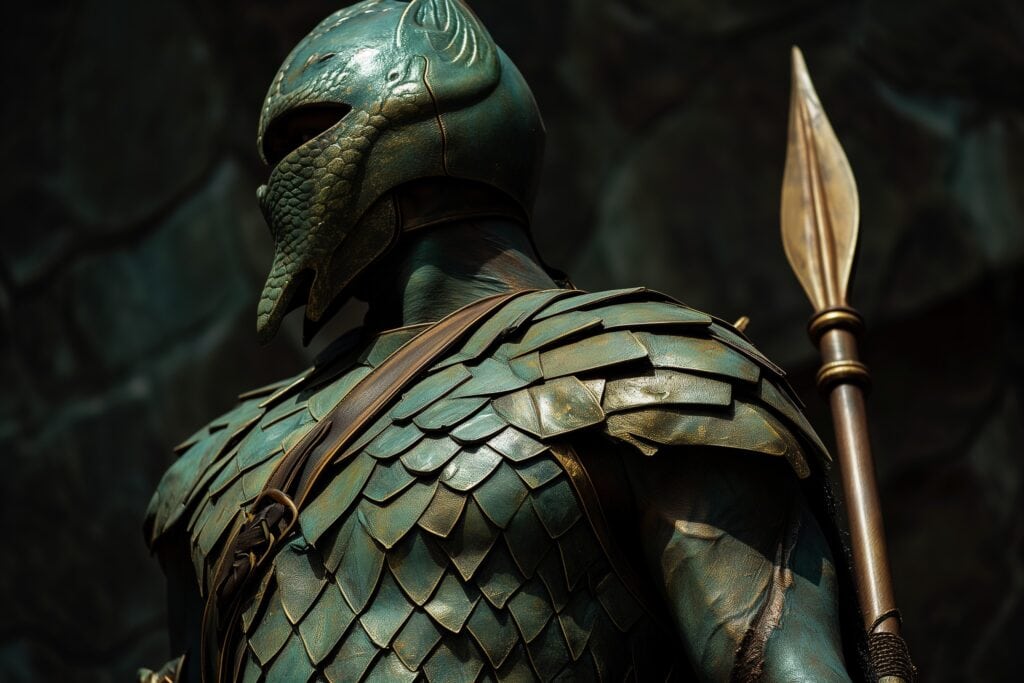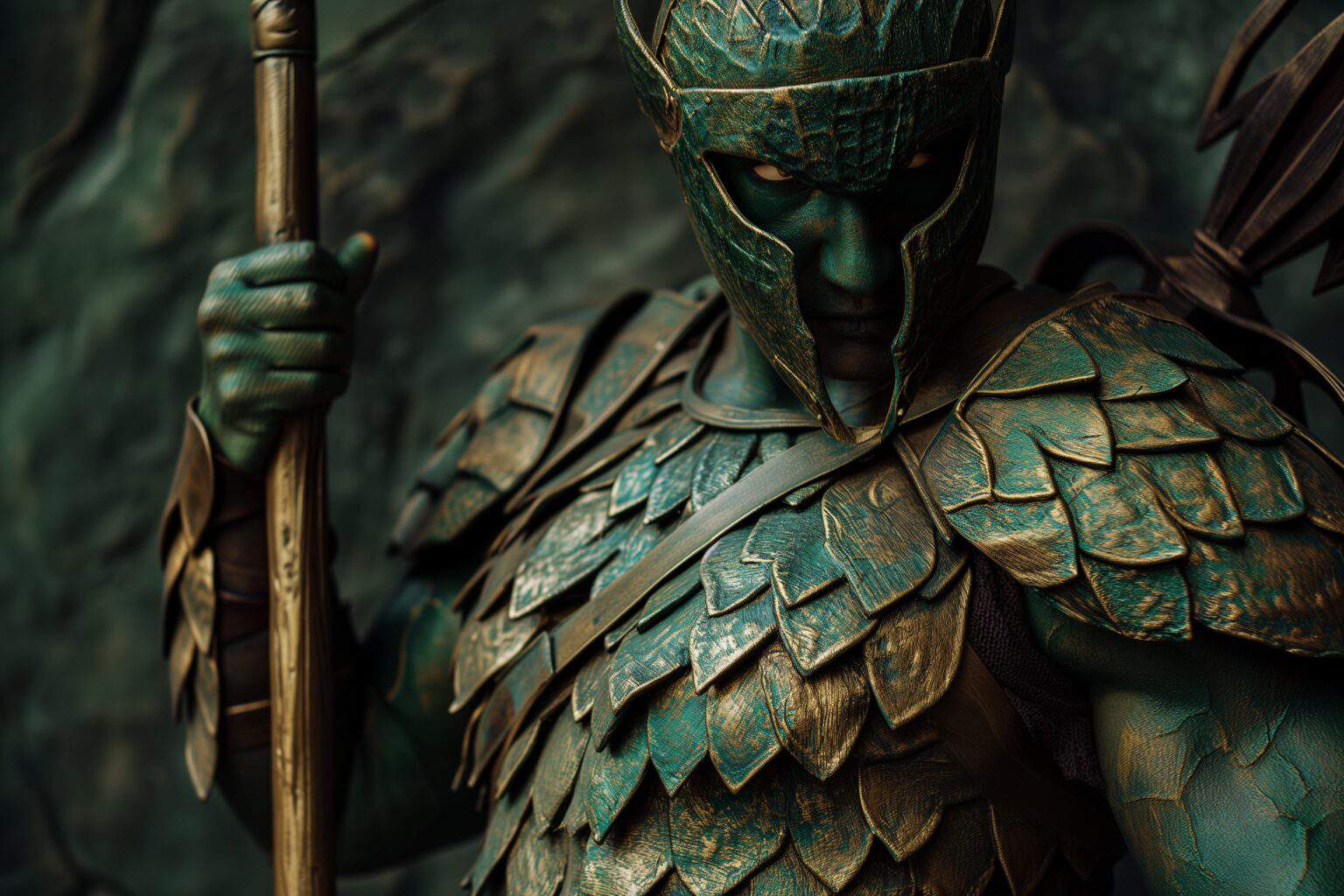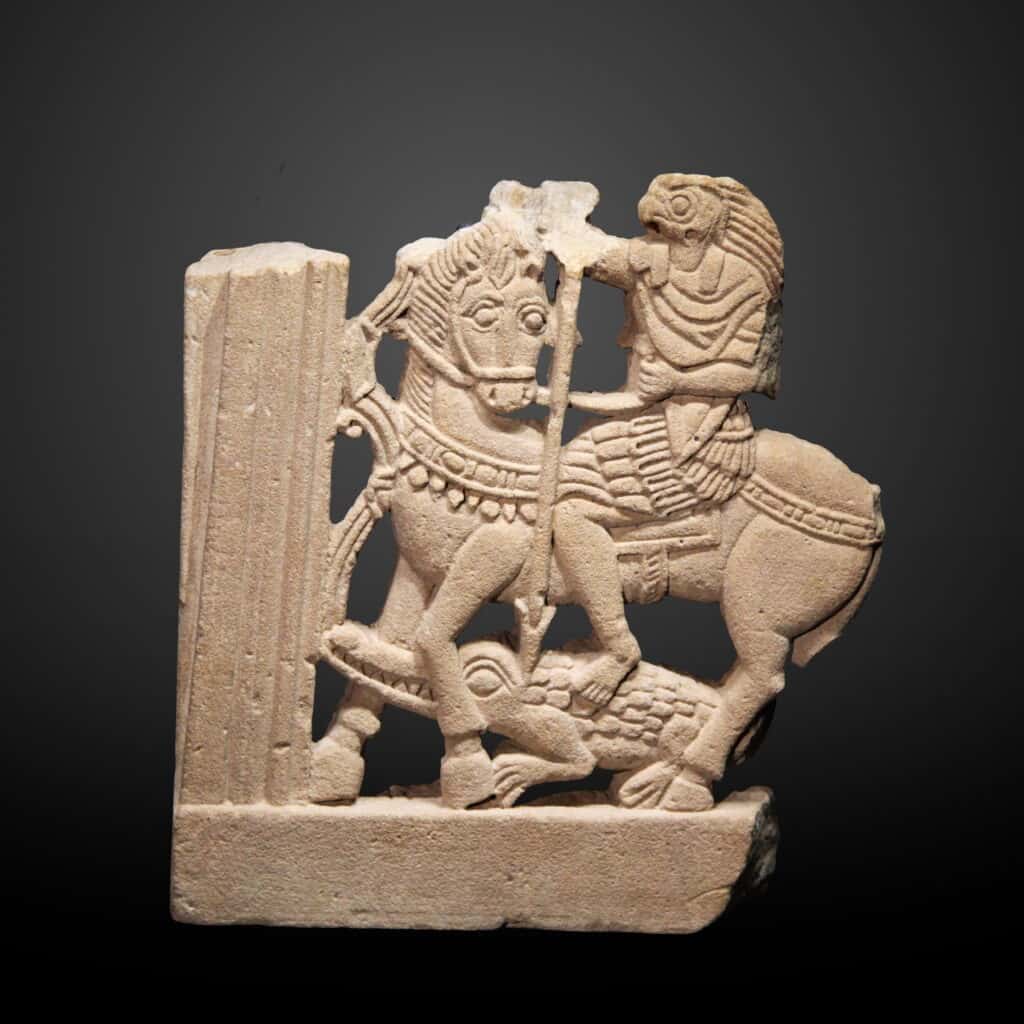
Setting: The story is set during a time when the Israelites were at war with the Philistines.
Goliath: Goliath was a giant warrior from the Philistine army. He was described as being over nine feet tall and wore heavy armor. For 40 days, he challenged the Israelites to send out a champion to fight him, but they were all terrified.
David: David was a young shepherd boy, the youngest of eight brothers. He was not a warrior, but he was deeply faithful and courageous.
The Challenge: David heard Goliath’s challenge and was offended by his defiance against the God of Israel. David volunteered to fight Goliath, even though King Saul and others doubted his ability because of his youth and inexperience.
The Battle: David refused the offer of Saul’s armor and chose instead to fight with his sling and five smooth stones he picked from a stream. He confronted Goliath, proclaiming his faith in God’s protection.
The Victory: As Goliath moved in for the kill, David used his sling to hurl a stone at Goliath’s head, hitting him on the forehead. Goliath fell face down to the ground, and David then used Goliath’s own sword to behead him. This unexpected victory stunned both armies.
Aftermath: David’s triumph over Goliath brought him great fame and marked the beginning of his rise to become the King of Israel. His faith, courage, and skill with the sling turned the tide of the battle, leading to a great victory for the Israelites.
Goliath
Giant Stature: Goliath was described as a giant, standing at about six cubits and a span in height, which is often translated to be approximately 9 feet (2.74 meters) 9 inches (about 2.97 meters (9.74 feet)) tall.
Philistine Warrior: He was a warrior from Gath, one of the five city-states of the Philistine confederation.
Intimidating Appearance: Goliath’s physical appearance was meant to intimidate. His size alone was formidable, and he was often depicted as being muscular and powerful.
Heavy Armor: He wore a coat of scale armor made of bronze that weighed about 5,000 shekels (approximately 125 pounds or 57 kilograms), signifying both his strength to carry such weight and the advanced metallurgy of the Philistines.
Bronze Helmet: He wore a bronze helmet, further adding to his formidable armored appearance.
Greaves and Javelin: Goliath also wore bronze greaves (armored protection for the legs) and had a bronze javelin slung on his back.
Iron Spear: His spear was described as having an iron spearhead weighing 600 shekels (about 15 pounds or 6.8 kilograms), with a shaft like a weaver’s rod, indicating its substantial size and weight.
Shield Bearer: Goliath went into battle with a shield bearer ahead of him, which was common for elite warriors of that era. This person would carry a large shield to protect Goliath as he moved.
His spear shaft was like a weaver’s rod, and its iron point weighed six hundred shekels. His shield bearer went ahead of him.
1 Samuel 17:7
Defiant and Arrogant: In the biblical narrative, Goliath is portrayed as being defiant and arrogant, especially towards the Israelites and their God, issuing daily challenges for single combat.
Reputation: Goliath’s reputation as a fearsome warrior was well-established, which contributed to the fear he instilled in the Israelite army.
Skillful Combatant: Although the Bible does not detail his combat skills, the fact that he was a champion of the Philistines suggests that he was a skilled and experienced warrior.
Scale armor
It is also important to mention that Goliath wore “scale armor” (שִׁרְי֥וֹן קַשְׂקַשִּׂ֖ים, shiryon qasqasim) (1 Samuel 17:5). This armor weighed over 125 pounds, implying he was massive. Everywhere the term קַשְׂקַשִּׂ֖ים (qasqasim) is used in the OT, it means “scales” (Leviticus 11:9-10, 12; Deuteronomy 14:9-10; Ezekiel 29:4). The ESV only makes one exception, as it translates the word as “coat of mail” here in 1 Samuel 17:5. Though this translation is understandable because chain mail would resemble scales, it obscures an important connection with the serpent (and possibly Dagon). (source)
You may eat anything from the water if it has both fins and scales, whether taken from salt water or from streams. But you must never eat animals from the sea or from rivers that do not have both fins and scales. They are detestable to you.
Leviticus 11:9-10

Was Goliath a serpent?
From the same source:
Scale armor ramps up the significance, as it connects Goliath with the serpent himself. Goliath was the seed of the serpent, and David was of the seed of the woman. Whether Goliath was the biological offspring of the serpent (through the Nephilim) or merely the spiritual offspring, there is a connection with Genesis 3:15. David killed Goliath with a stone to the head, and then he cut off Goliath’s head (1 Samuel 17:48-51). David, the seed of the woman, crushed the head of the seed of the serpent.
Note: Seed of the woman or offspring of the woman (Biblical Hebrew: זַרְעָ֑הּ, romanized: zar‘āh, lit. ’her seed’)
The scale armor may also connect Goliath with the Philistine god Dagon, who was possibly a god of the sea. Goliath had cursed David “by his gods,” but in the end it was Goliath who was cursed (1 Samuel 17:43). Like his god Dagon, Goliath fell facedown and his head was cut off (1 Samuel 17:49-51; cf. 5:3-4). Israel’s first king, Saul, fought a serpent in his first battle against Nahash (Hebrew “serpent”), king of the Ammonites, and here David faced his own serpent. David passed the test by defeating the giant serpent and cutting off his head. David was better than Saul, the tall man who feared the Philistine giant (1 Samuel 17:11).

Saint George and the dragon
A venom-spewing dragon, residing in a pond near Silene in Libya, plagued the region by poisoning the countryside. To protect their city, the residents offered the dragon two sheep daily. When this wasn’t enough, they began sacrificing a man and a sheep, and eventually their children and youths, selected through a lottery. On one occasion, the king’s daughter was chosen. Despite the king’s offer of his wealth to spare his daughter, the people declined. Consequently, the princess, adorned as a bride, was sent to the lake to be devoured by the dragon.
Saint George happened to arrive at this location. Although the princess attempted to persuade him to leave, he insisted on staying. While they conversed, the dragon emerged from the pond. Saint George, making the Sign of the Cross, attacked the dragon on horseback, inflicting a serious wound with his lance. He then instructed the princess to give him her girdle, which he used to lead the dragon, now docile as if on a leash.
They led the dragon to Silene, causing terror among the citizens. Saint George proposed to slay the dragon if the people agreed to convert to Christianity and be baptized. Following their conversion, including that of the king and 15,000 men, Saint George executed the dragon, decapitating it with his sword. The dragon’s body was removed from the city using four ox-carts. In honor of this event, the king erected a church dedicated to the Blessed Virgin Mary and Saint George at the dragon’s death site, where a spring with healing properties emerged. Notably, only the Latin version of this legend describes Saint George spearing the dragon before killing it with his sword.
Horus and Set

